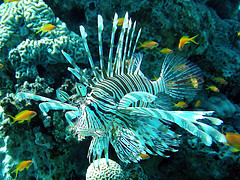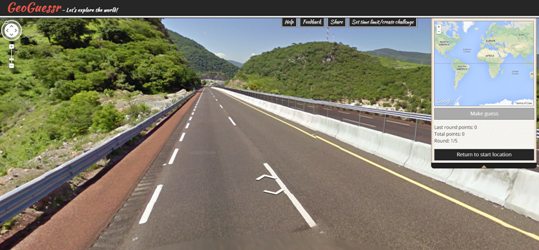Red Sea Diving at its Best
Posted by: kirsty_wilson in Africa, tags: Beaches, Diving, Egypt, Outdoor Activities, SnorkelingBut Why the Red Sea?
 The Red Sea has for long been a favourite diving destination for many divers across the world. Join any conversation about great diving and the Red Sea just comes up automatically. Most UK divers have visited one of the six different diving regions at some point in their diving careers, returning year after year, and for a very good reason. They have accustomed themselves to such great diving that when attempting to visit a different destination they tend to compare it with their old time favourite.
The Red Sea has for long been a favourite diving destination for many divers across the world. Join any conversation about great diving and the Red Sea just comes up automatically. Most UK divers have visited one of the six different diving regions at some point in their diving careers, returning year after year, and for a very good reason. They have accustomed themselves to such great diving that when attempting to visit a different destination they tend to compare it with their old time favourite.
But why the Red Sea? What is so good about it that divers just keep raving about its diving over and over?
Well, for a very good reason as you are about to find out when reading the next paragraphs about diving the different regions the Red Sea has to offer.
Taba
Still a developing tourist area, the diving in Taba is virtually unspoilt with pristine coral reefs very close to shore which is a massive bonus. This means you do not have to travel very far spending precious time on boats to experience the best dive sites.
What’s even greater about Taba is that the region is sometimes visited by one of the most amazing sea creatures, whale sharks. Yes that right, whale sharks! From around April through to May and again September and October divers have been privileged to spot, swim and interact with whale sharks as long as 12 metres.
Dahab
Dahab is just an old time favourite for divers with great shore diving available as its underwater topography is a continuation from Dahab’s jagged mountains forming seascape valleys, beautiful reefs, canyons and caves.
The beautiful “Blue Hole” is one of Dahab’s most famous dive sites with great colours ideal for photographers. “The Canyon” is a narrow and beautiful canyon created by volcanic activity home to hard and soft corals as well as rich fauna. The region has something for everyone with a long promenade offering a full range of water-front restaurants and a carefree atmosphere complimenting its superb diving.
Sharm El Sheikh
Sharm El Sheikh is a fully developed resort visited by many divers. The atmosphere here is the total opposite of Dahab’s, the resort is more commercialised and ideal for those looking to combine great diving with very good nightlife. The diving in this area is very famous for the array of dive sites in the Ras Mohammed National Park including Shark of Yolanda, a cargo ship that sank in less than 18 meters of water with a load of toilets.
The Straits of Tiran, 4 underwater islands with around 15 different dive sites is also very famous among divers as the currents in this area are responsible for the healthy corals and resident marine life.
Hurghada
Less developed than Sharm El Sheikh but at a growing stage to become more commercialised, this coastal area is the perfect base to catch a liveaboard and ideal for wreck divers. The huge variety of wrecks laying on the bottom sea, some with very interesting history will keep you busy for a few days during your visit.
With the main wreck location nearby, Abu Nuhas is a shipwreck graveyard and its four wrecks among which are the famous Ghiannis D and the Carnatic will offer great diving opportunities. But is not all about wrecks, Hurghada is also home to diverse marine life ranging from the tiniest nudibraches to the amazing whales hark encounters.
Marsa Alam
Are you looking for an exciting diving location with a myriad of pristine reefs home to stunning hard and soft corals and an astonishing abundance of marine life? Then look no further and book your next trip to Marsa Alam as you will get to experience the best reefs the Red Sea has to offer and if you are on one of your lucky days get a glimpse of the resident Dugong that feeds on the sea grass.
But that’s not all! Marsa Alam is also famous for an absolute must dive site. “Dolphin House”, a large, horseshoe-shaped reef is home to dozens of spinner dolphins, hiding eels, leopard groupers and much more.
Hamata
Last but by no means least; Hamata’s crystal clear water located to the south of the Red Sea is the ideal get away from it all. Fury Shoals and St. Johns are some of the most southerly reef systems with a number of dive sites accessible only by liveaboard which just like Marsa Alam means you get to experience great reef dives.
If you are new to diving in the Red Sea I hope this article has given you a good insight to this diving destination and encouraged you to think about booking your next diving trip to one of the six regions in the Red Sea.
Author Bio
Keith Barrett is a keen diver and is able to mix business with pleasure: he works with UltimateDiving.co.uk and takes the opportunity to visit many great locations around the world. He also writes extensively about diving experiences.



 Trip Cancellation, Interruption, Delay Insurance: This is the closest to all-inclusive travel insurance that you can get; if unable to go on the trip you will be refunded, and if calamity strikes while vacationing, you will have medical and evacuation coverage too.
Trip Cancellation, Interruption, Delay Insurance: This is the closest to all-inclusive travel insurance that you can get; if unable to go on the trip you will be refunded, and if calamity strikes while vacationing, you will have medical and evacuation coverage too.
 Entries (RSS)
Entries (RSS)